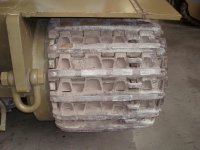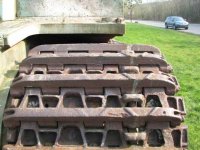jknaus
Administrator
One of my pet peeves is the modelling of German Tank Tracks and adding rust to them. I've mentioned this before, but having watched the newest Night Shift you tube video I commented there and figured I mention it here again also.
German track was made of highly rust resistant steel.
From Google. "German WWII tank tracks were primarily made from high-manganese steel alloy for durability and wear resistance, though early tracks might have used other alloys or even been made of magnesium-heavy alloy. This high-manganese steel contained corrosion-inhibiting elements that prevented the rapid, bright red rusting seen on simpler iron, instead wearing to a dull, dark brown or goldy-brown surface."
James
German track was made of highly rust resistant steel.
From Google. "German WWII tank tracks were primarily made from high-manganese steel alloy for durability and wear resistance, though early tracks might have used other alloys or even been made of magnesium-heavy alloy. This high-manganese steel contained corrosion-inhibiting elements that prevented the rapid, bright red rusting seen on simpler iron, instead wearing to a dull, dark brown or goldy-brown surface."
James



